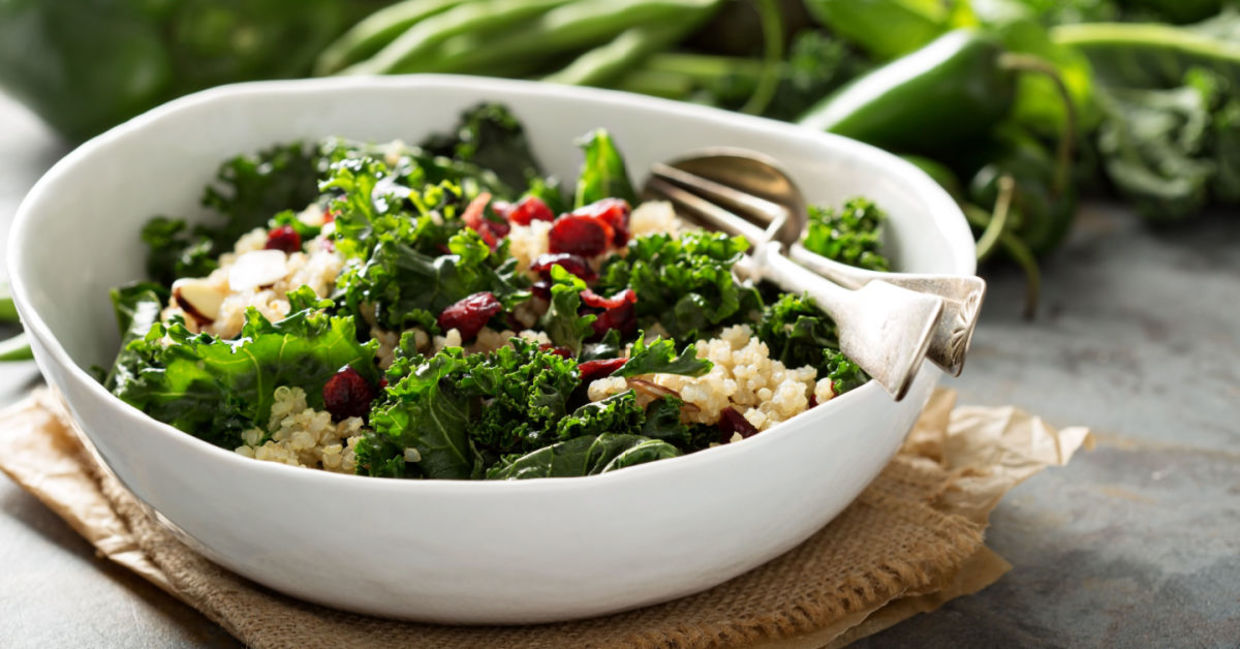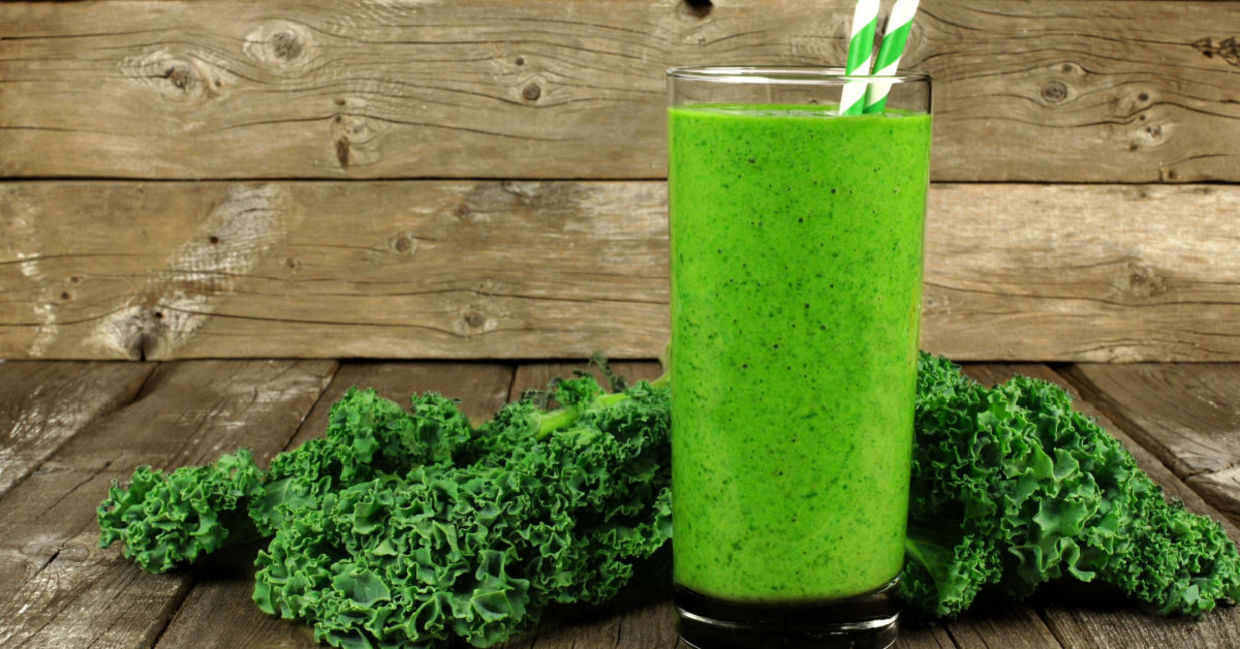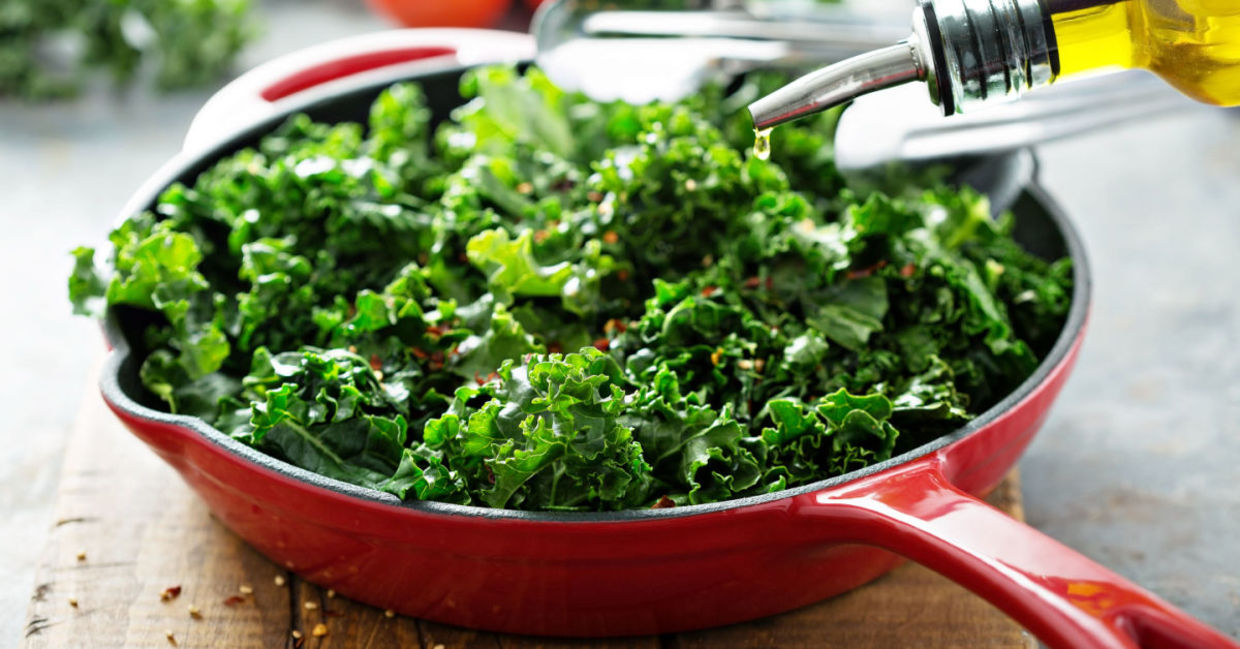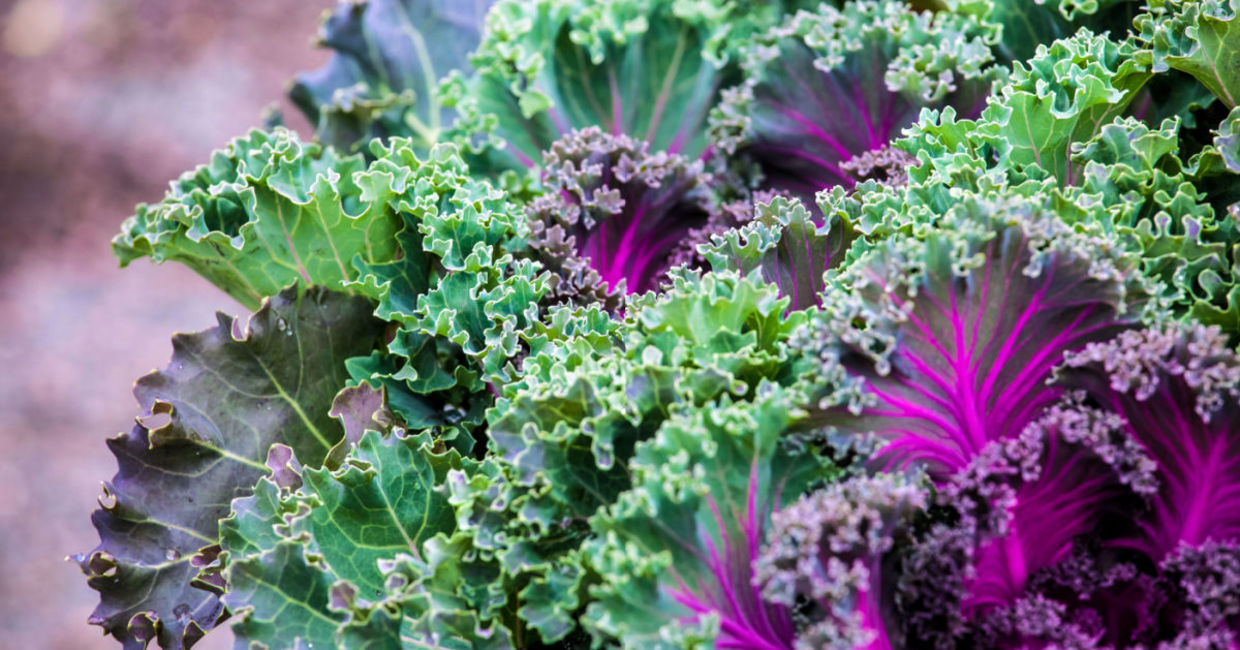
(Rawpixel.com / Shutterstock.com)
If you are looking for a healthy food, kale certainly fits the bill. This cruciferous superfood is in the same family as cabbage, cauliflower, brussels Sprouts, and broccoli; but you can tell it apart from the others in the market by its bright purple and green leaves.
What sets kale apart from the other cruciferous vegetables is that it keeps growing in the winter. In fact, kale gets sweeter after the first frost, according to Everyday Health. The most popular and easiest to find type is curly kale.
While it has been grown in Europe for centuries, kale is becoming increasingly popular in the US. That’s because it is incredibly good for you. Check out these five health and wellness benefits of kale:
Packed Full of Nutrients
Kale is highly nutritious because it is loaded with vitamins, (A,K,C, B6, thiamin, riboflavin, and niacin), minerals (manganese, calcium, potassium, cooper, magnesium, iron, and phosphorus), fiber, omega 3 fatty acids, as well as antioxidants. In fact, according to Healthline, kale is one of the most nutrient-dense foods on the planet.
Just one cup of raw kale contains 206 percent of the USDA recommended amount of Vitamin A from beta-carotene, 684 percent of Vitamin K, and 234 percent of vitamin C. Incorporating kale into your diet will pay you back in healthy ways.

(Elena Veselova / Shutterstock.com)
Contains Powerful Antioxidants
Kale, like other leafy greens contains powerful antioxidants including beta-carotene, vitamin C, polyphenols, and flavonoids. Antioxidants can help control oxidative damage from free radicals thus protecting you from many chronic diseases, some cancers, and aging. Some of the antioxidants – quercetin and kaempferol – found in kale also have other functions that contain anti-viral properties, may lower your blood pressure, and help with inflammation.

(JeniFoto / Shutterstock.com)
Helps with Blood Clotting
One of the benefits of kale that comes from its high vitamin K content is that it helps your blood clot. It does so by activating proteins that can bind to calcium. In fact, the type of vitamin K found in the cruciferous vegetable is K1 which is different from the K2 usually found in fermented vegetables.
Another important benefit is that the vitamin K found in kale also plays a crucial role in building and maintaining bone density according to Women’s Health. This reduces the risk of bone fractures or breaks.

(from my point of view / Shutterstock.com)
Aids in Reducing Cholesterol
Kale contains cholesterol lowering properties that can help lessen the risk of heart disease. A 2008 study published in the Chinese CDC journal Biomedical and Environmental Sciences found that kale juice could lower the risk of coronary artery disease in men with high cholesterol. Bad cholesterol (LDL) levels were reduced by 10 percent while good cholesterol (HDL) was increased 27 percent after drinking kale juice daily for 12 weeks. Steamed kale also works very well.

(Elena Veselova / Shutterstock.com)
Protects Eyes and Vision
Many people’s eyesight degrades as they get older, according to Women’s Health, but kale can help to mitigate that. The antioxidants lutein and zeaxanthin that are found in the cruciferous vegetable, also helps to protect your eyes, and maintain your vision by reducing the risk of cataracts and maculopathy. For even better results, eat kale with carrots.

(Alexander Tolstykh / Shutterstock.com)







